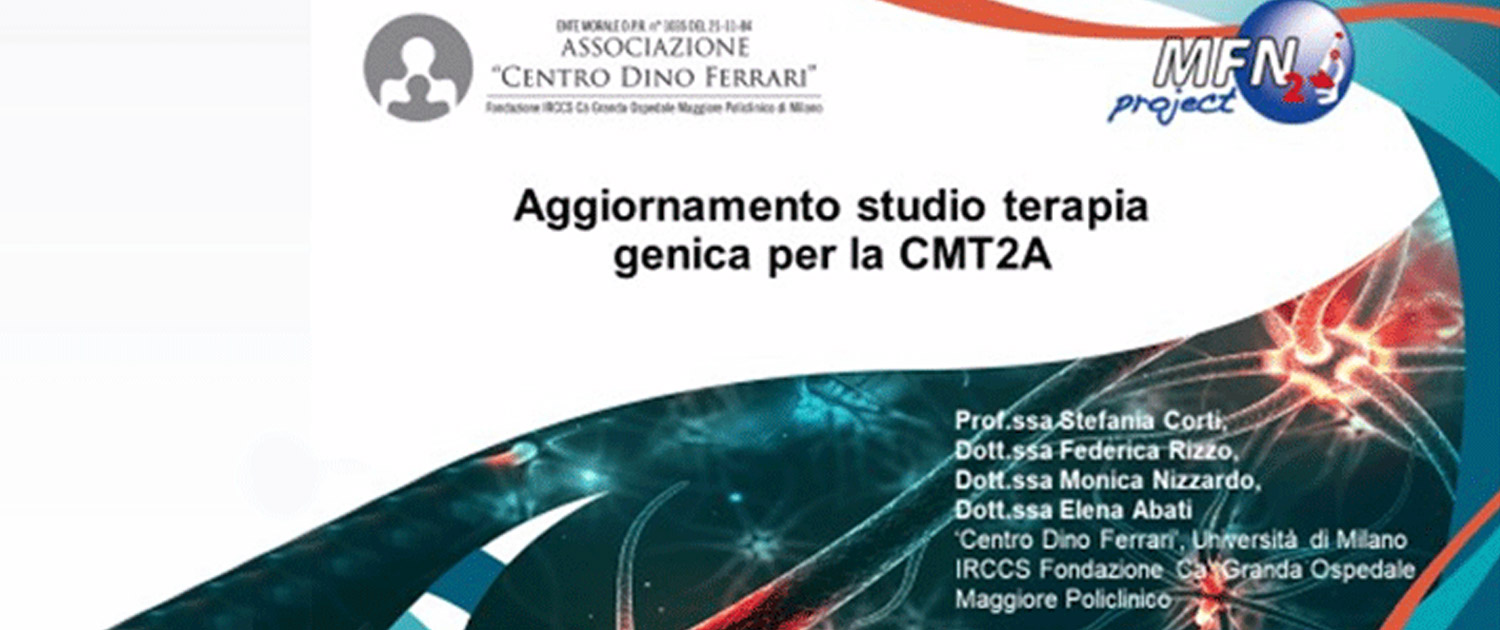Update on gene therapy for CMT2A
22 June 2021
On 25 May 2021 the first virtual meeting between families and doctors/researchers of the “Centro Dino Ferrari” Università degli Studi di Milano -Ospedale Policlinico was held for an update on CMT2A.
Prof. Stefania Corti, head of the Neural Stem Cell Laboratory of the “Dino Ferrari Center” of the University of Milan – Ca’ Granda IRCCS Foundation Hospital Maggiore Policlinico with its team of experienced researchers, met with families for a moment of discussion and update on Charcot-Marie-Tooth disease type 2A.
The serious global pandemic we are experiencing has forced everyone to drastically change their habits, vulnerable people in particular, in many cases, adopted a rigid lockdown and had to postpone long-term medical examinations. The time of the meeting, even if virtual, gave the specialists the way to:
– heartening the families, reassuring them that, despite the hard moment, the Scientific Research did not stop;
– dealing directly with all the doubts and concerns that this new lifestyle has imposed on patients;
– clarifying the new results and further insights that are being done for a possible gene therapy in CMT2A.
“The research group of Prof.Corti continued the activities related to the project aimed at developing a gene therapy for CMT2A based on the use and optimization of viral vectors able to modulate the expression of MFN2 “sick” and “healthy” in models in vitro and live pathology. Part of the work of recent months has been devoted to the review and study of the literature on animal models of the pathology currently available, essential to assess the effectiveness of therapy. It has thus been possible to identify a new experimental model of the pathology that seems to be very promising. The recent international collaborations are the most satisfactory result of these months of work as they are allowing us to move closer and closer to an effective clinical translation of our strategy.
Happy that this moment has filled a gap due to the historical period, we hope to be able to meet again families and patients as soon as possible in person and in complete safety. The research does not stop and will continue its journey, hoping that it will bring important outcomes for all our small and big patients as soon as possible!”




